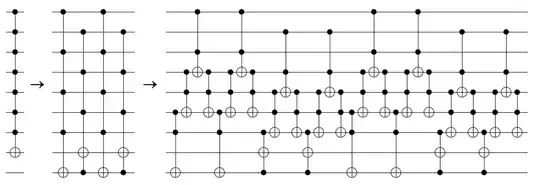It is easy to see that no finite set of classical reversible gates can be strictly universal (without ancilla) for classical reversible computation: for any reversible gate on $n$ bits, in its action on $n+1$ bits it induces an even permutation, and so cannot achieve an arbitrary permutation of the set $\{0,1\}^{n+1}$ in any combination.
With sufficiently many ancillary bits, the Toffoli gate can achieve arbitrary permutations; this is described many places, starting with Toffoli's original paper. (The standard construction as he describes it uses $n-3$ ancillary bits for computations on $n$ bits.)
But how close can you get? Specifically, for, say, the Toffoli gate plus NOT gates (or equivalently arbitrary 3-bit gates), can you achieve an arbitrary even permutation of $\{0,1\}^n$ for any $n > 3$?
Related, I've seen claims that a single ancillary bit suffices to make the Toffoli gate universal; is there a good reference for that? (That is a weaker result, of course.)
(I'm asking about classical reversibility, so maybe the question should be redirected. This sign-of-permutation argument explains why any proof of strict quantum universality needs to use a non-permutation matrix in bootstrapping from operations on a finite set of qubits to general circuits.)
